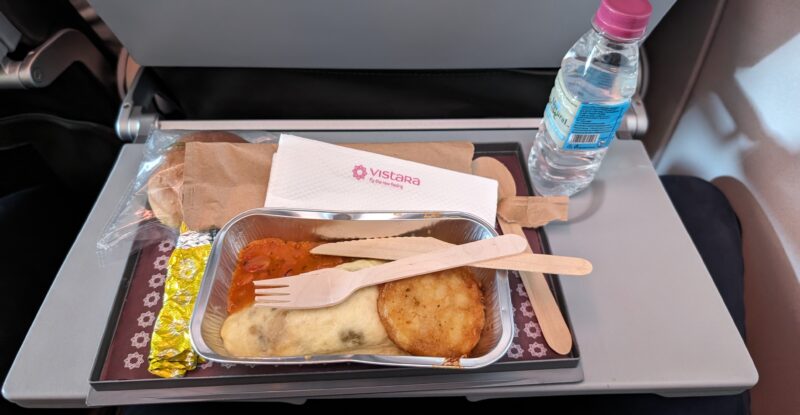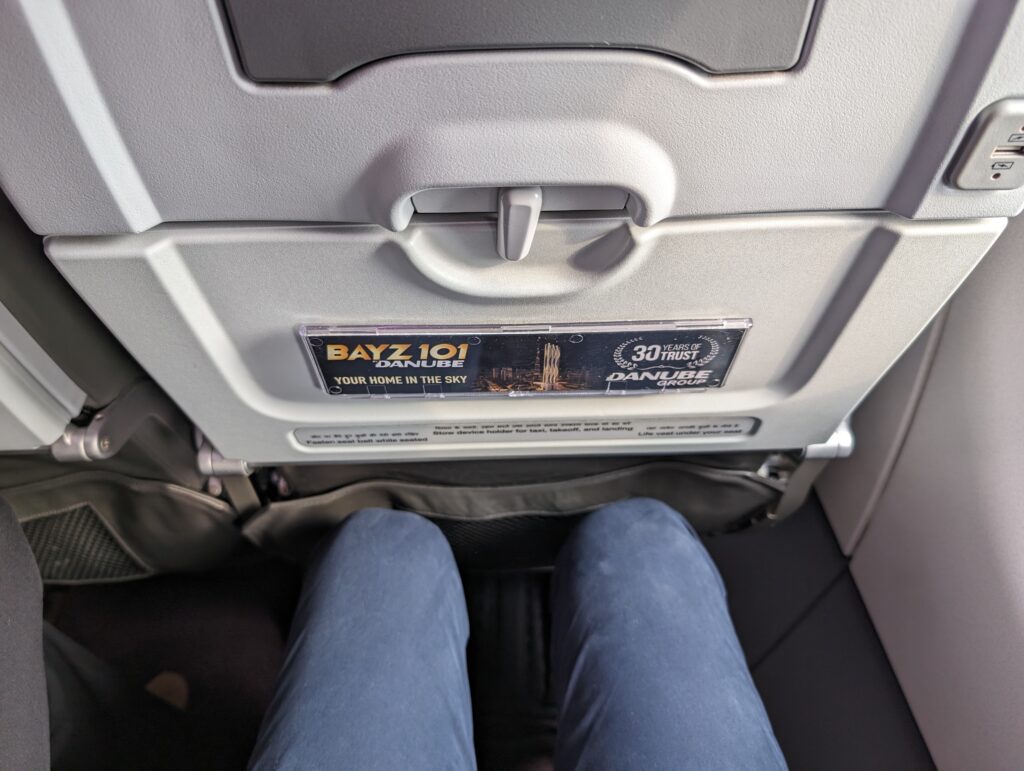 Delhi and Mumbai are connected by India’s busiest air route and Vistara, consistently rated as the country’s best airline, operates service between the two cities 17 times a day in each direction. Vistara’s high-frequency DEL-BOM schedule provided plenty of options for this AvGeek to enjoy an airline that will soon fly into the sunset as the brand disappears and the operation merges with Air India.
Delhi and Mumbai are connected by India’s busiest air route and Vistara, consistently rated as the country’s best airline, operates service between the two cities 17 times a day in each direction. Vistara’s high-frequency DEL-BOM schedule provided plenty of options for this AvGeek to enjoy an airline that will soon fly into the sunset as the brand disappears and the operation merges with Air India.
India’s Tata Group now owns both carriers. It acquired Air India two years ago and decided to merge it with 9-year-old Vistara, which also counts Singapore Airlines (SIA) as part-owner. SIA will retain up to 25.1% of the future merged airline.
Air India CEO Campbell Wilson recently suggested that Air India has some way to go before it matches full-service carrier Vistara’s high standards. I was keen to examine what he meant by that, and came away satisfied.
Vistara has a young fleet of 51 Airbus A320neo and A321neo twinjets that fly across the country and region. Its only other aircraft type, the Boeing 787-9, supports a modest longhaul route network. My ride for the 2-hour southbound Delhi-Mumbai flight was VT-TNP, a 4.3-year old A320neo with eight seats in business, 24 in premium economy and 132 in economy, including my own.
Business class is a 2-2 recliner affair akin to US domestic first class or international premium economy. On Vistara’s narrowbodies, premium economy sports a 3-3 configuration but the seats have more legroom than in economy class, plus adjustable headrests.
Economy class features the same seats without the headrest adjustment, pitched at a rather tight 30 inches. I found the economy seat itself to be comfortable enough.
Absent on this fleet type is any sort of in-seat IFE screens. Vistara instead relies on wireless IFE which streams content and a moving map to passengers’ own devices. A tablet holder and USB-A power port are positioned at the top of the seatback.
Vistara boards by zones with premium passengers and status holders invited onboard first, followed by a back-to-front economy class boarding order.
All tickets on Vistara come with a meal and 15kg of checked luggage included. Our breakfast-time flight featured a rather tasty omelet served with baked beans and hash brown potatoes.
The cutlery was wooden, and the meal was served in an aluminum container — both are recyclable. Vistara does, however, retain a plastic water bottle and plastic packaging for the barely edible bread that was abandoned by me after a single bite.
Our flight was full but for an A320 with only 162 seats — hardly super dense — overhead bin space was at a premium. Vistara crew members were efficient and proactive. Well before all passengers had boarded, the crew were busy playing tetris with bags in the overhead bins.
Given the relatively young average age of Vistara’s A320neo family fleet, I was surprised at the lack of large overhead bins. Based on the amount of time and effort it took to get the flight ready for pushback, I reckon that Vistara could benefit from Airbus’ light-refit to larger bins.
For the rest of the inflight experience, the staff were quick and well organized. Our meals were followed by tea and coffee, served in recyclable paper cups.
No Internet was offered on this A320neo, though Vistara does provide Panasonic Avionics-powered inflight connectivity on its A321neos and 787s, offering a free messaging tier to boot.
The stream-to-device IFE was a sufficient distraction on this flight, supplying a generous selection of movies and TV shows. Unfortunately, there only appeared to be half seasons of various popular TV series. I could not find a single complete season of any show. The map was disappointing with its lack of detail.
All in all, Vistara offers an extremely consistent experience and is the benchmark for a full-service airline in India. There are certainly opportunities for improvement in the legroom and overhead bin department. And the IFE moving map could use a modern refresh.
It remains to be seen if Air India will adopt the same cabin configuration when its own A320s are refurbished and the fleets are merged. Fortunately for both carriers, which boast quiet CFM LEAP and GEnx powerplants on their narrowbodies and 787s, respectively, things are a little less complicated on the engine commonality side than they might be on the aircraft interiors front.
Related Articles:
- Air India flight on ex-Delta 777 shows airline on climb not cruise
- Vistara makes good on domestic Premium Economy promise
- How other airlines’ PaxEx will help Air India to climb
- Air India Express ready to write next chapter; sunsets AirAsia India
- Air India vows PaxEx transformation as it orders nearly 500 jets
Featured image credited to Karun Mukhi















